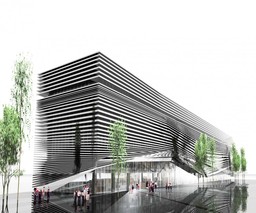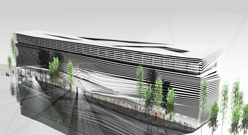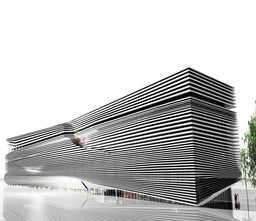-
- 10 DecProf. Kas Oosterhuis lectures at Doha Architecture Forum
- 03 DecAchilleas Psyllidis participates in the Collaborative Innovation Center on Big Data Science between IBM and TU Delft
- 02 DecAlireza Mahdizadeh Hakak is invited for a talk at the 4th Visionair General Assembly, INRIA Rennes, France
- 22 NovAchilleas Psyllidis and Han Feng participate and present at the Urban Systems and Environment Conference in Guangzhou, China
- 20 NovDr. Nimish Biloria gives an Invited Talk, chairs scientific research sessions and operates as Scientific Committee member at ICONARCH II
- 13 NovSina Mostafavi and Nimish Biloria from Hyperbody with Soungmin Yu from ZHA Published in ACADIA 2014, Design Agency
- 13 NovKas Oosterhuis and Henriette Bier are lecturing and chairing session, respectively, at the international conference CCC co-organized by Hyperbody
- 12 NovHenriette Bier lectures at the International Technology Festival Border Sessions 2014 in The Hague
- 11 NovDr. Nimish Biloria and Hyperbody students, showcase real-time interactive prototypes developed for the EU Project: Metabody at the DIG-it! exhibition
- 11 NovAchilleas Psyllidis from Hyperbody together with researchers from Web Information Systems demonstrate the SocialGlass platform prototype at DIG-it!
-
-

- Courtesy of Alireza Mahdizadeh Hakak, Ali Aleali, & Fatemeh Farmanfarmayee
Reaching the goals of Hyperbody in creating Non-standard buildings and adding the compatibility with LEED qualifications and meeting construction confinements, Alireza Hakak PhD candidate of Hyperbody has won an open competition. Hakak and his team were challenged to design a 10,000m2 commercial center for building industry in the Gilan Province, which is located in the northern part of Iran. Within a moderate climate and surrounded with forests, enough precipitation and unique landscape scenes are the main characteristics of the site.
Specific site dimension (150*20), building codes and regulation forced designer to extend the footprint through an east/west extension. To reach the final square meter, minimizing the voids and atriums was considered. However spotting two atriums for structural purposes meant that building respiration seemed to be necessary.
Flooded with environmentally conscious and LEED compliant, choices were implemented in energy efficiency (using the most natural ventilation and light by helping infiltration of the light and fresh air through elevation and roof), renewable energy (applying solar cells), water efficiency (designing a system for gathering waste water and recycle it for reuse), air quality (considering two atriums for natural light and ventilation) and usage of rapidly renewable resource (applying wood as a renewable resource for the second skin of building for climate and sound isolation).
The conference room, restaurant and other facilities shifted to the top floor not to interfere with commercial parts, also to get the advantages of the best view. Following the emergency exit regulations, three separate vertical accesses (staircase and elevators) been considered, starting from the top floor to the safe zones. Inside escalators will help the vertical access especially in the commercial spaces.
Seen from outside, the building seems to be formed by invisible forces of nature and actually deform the envelope. On one hand, we follow building codes and construction regulation and use the full capacity of the allowed footprint to reach the optimum square meters tp dictate the cubic simple shape. On the other hand, destructive forces and dissonances are at work which fragment the choreography of the monument and shaped the skin.
Architects: Alireza Mahdizadeh Hakak, Ali Aleali, Fatemeh Farmanfarmayee
 Facebook/
Facebook/
 Twitter/
Twitter/
 RSS
RSS


